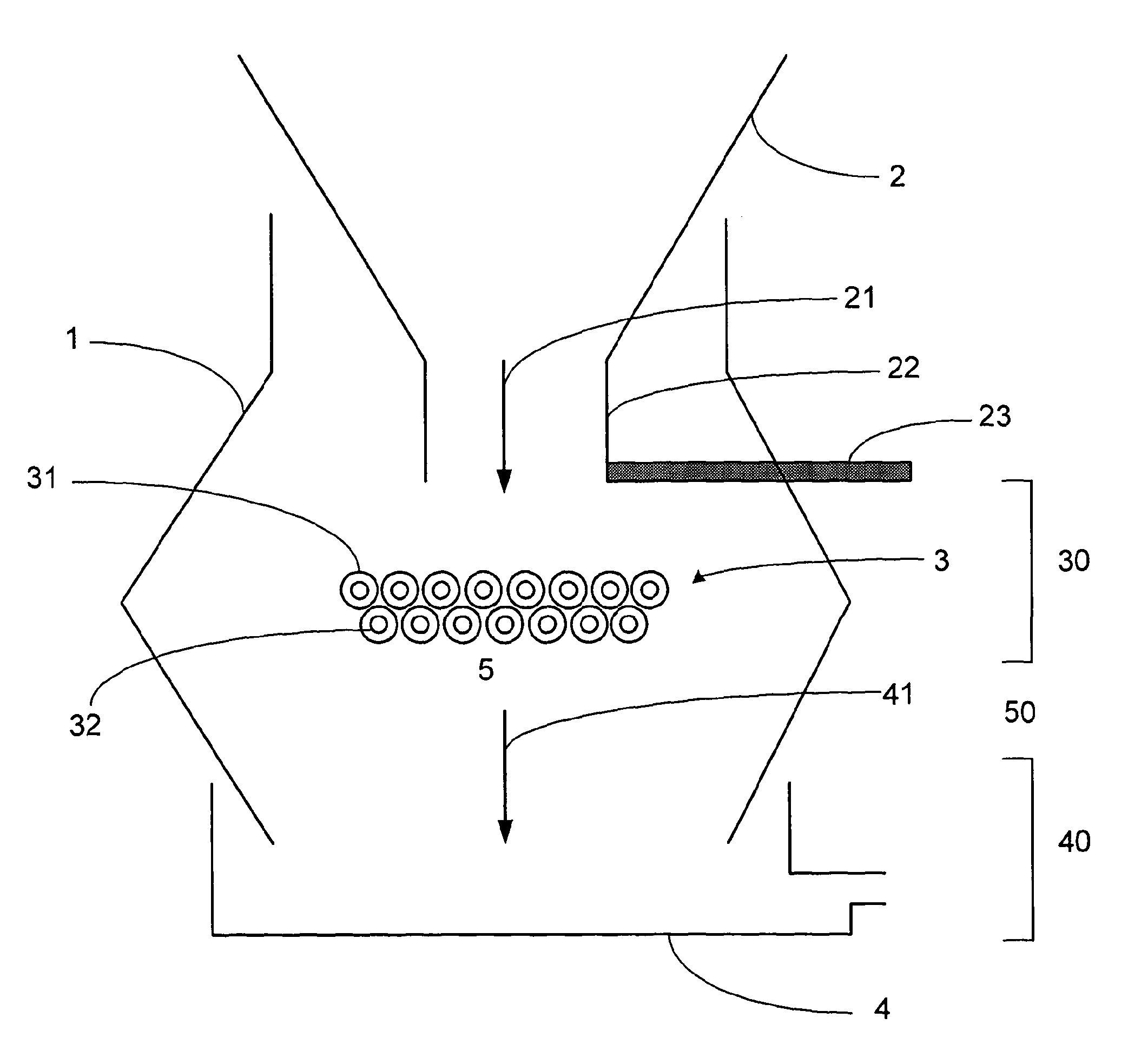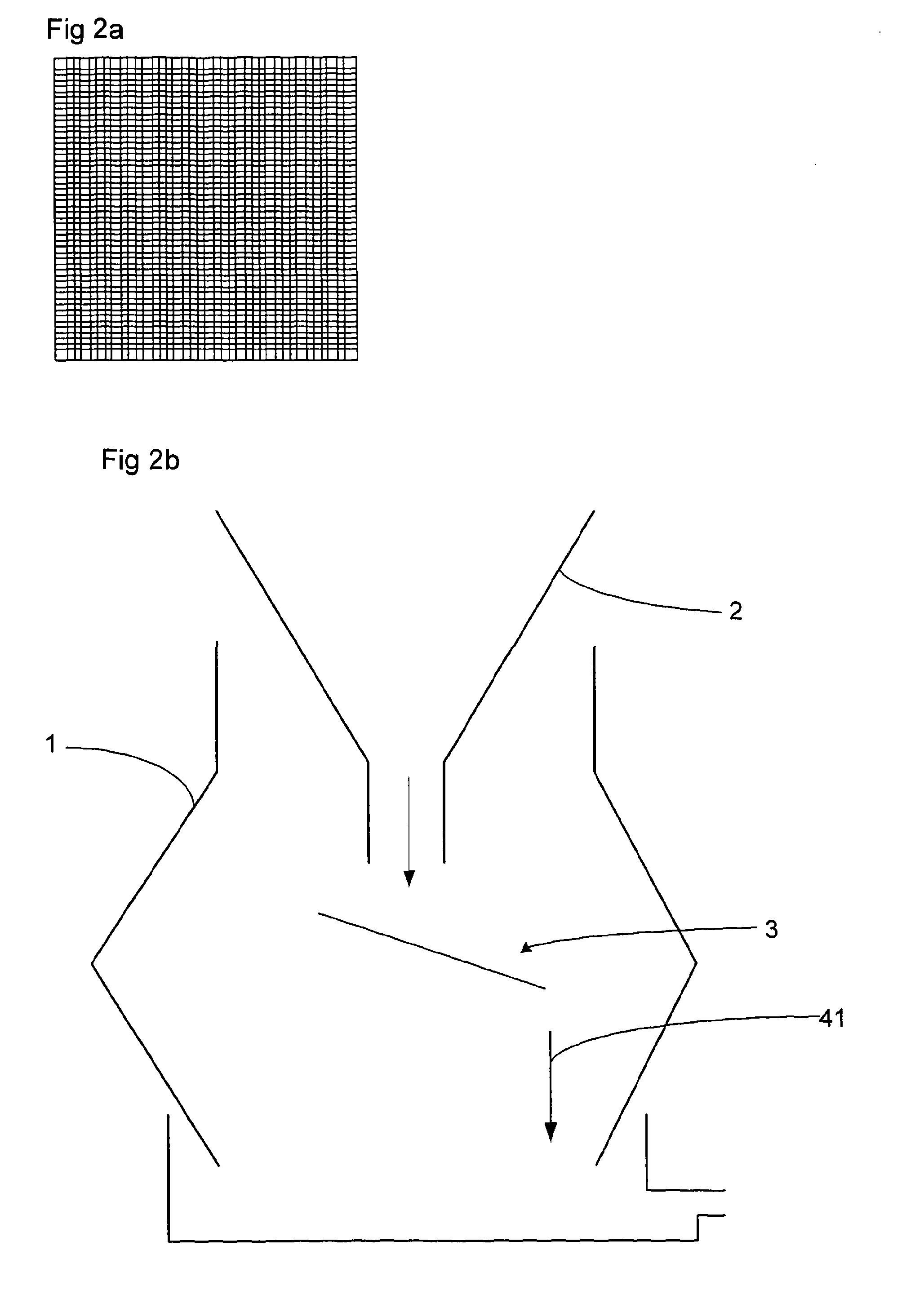Melting method and apparatus
- Summary
- Abstract
- Description
- Claims
- Application Information
AI Technical Summary
Benefits of technology
Problems solved by technology
Method used
Image
Examples
example a
First Melting Chamber:
[0082]Raw material: 75 wt % silica, 25 wt % sodium carbonate, total weight 200 g
Phase separation barrier heated to: 1,600° C.
Second Melting Chamber:
[0083]Raw material: intensely coloured glass in an amount of up to 20 g
Phase separation barrier heated to: 1450° C.
example b
First Melting Chamber:
[0084]Raw material: 75 wt % silica, 25 wt % sodium carbonate, total weight 200 g
Phase separation barrier heated to: 1,600° C.
Second Melting Chamber:
[0085]Raw material: non-coloured, high Pb content glass having a PbO content of up to 92 wt %
Phase separation barrier heated to: 950° C.
[0086]The two melts are combined in a homogeniser chamber. This example is a batchwise process in which the entire melt from each chamber is discharged into the homogeniser chamber. In a continuous process, the two melts are combined at an appropriate ratio, e.g. first melt: second melt weight ratio of from about 2:1 to about 10:1, e.g. about 5.1.
[0087]A further embodiment of the invention is depicted schematically in FIG. 6. In this embodiment, the apparatus incorporates a first homogeniser chamber 103 and a second homogeniser chamber 113. The first melting chamber 101, which is used to melt the major component of the final product (typically silica) is connected to both the first ...
example 1
[0089]A single silicon carbide (SiC) resistance heating element was placed inside a silica tube, with a total heated length of 200 mm and a diameter of 30 mm. Power was applied and the external temperature of the tube reached 1000° C. in five minutes. The silica tube showed no signs of thermal shock or cracking as a result of the rapid heating rate employed.
PUM
| Property | Measurement | Unit |
|---|---|---|
| Temperature | aaaaa | aaaaa |
| Temperature | aaaaa | aaaaa |
| Temperature | aaaaa | aaaaa |
Abstract
Description
Claims
Application Information
 Login to View More
Login to View More - R&D
- Intellectual Property
- Life Sciences
- Materials
- Tech Scout
- Unparalleled Data Quality
- Higher Quality Content
- 60% Fewer Hallucinations
Browse by: Latest US Patents, China's latest patents, Technical Efficacy Thesaurus, Application Domain, Technology Topic, Popular Technical Reports.
© 2025 PatSnap. All rights reserved.Legal|Privacy policy|Modern Slavery Act Transparency Statement|Sitemap|About US| Contact US: help@patsnap.com



